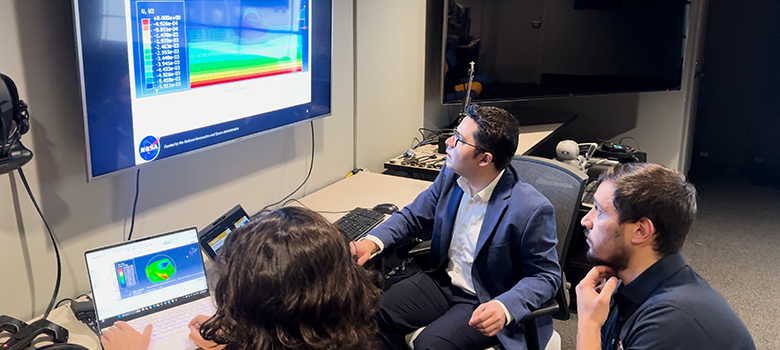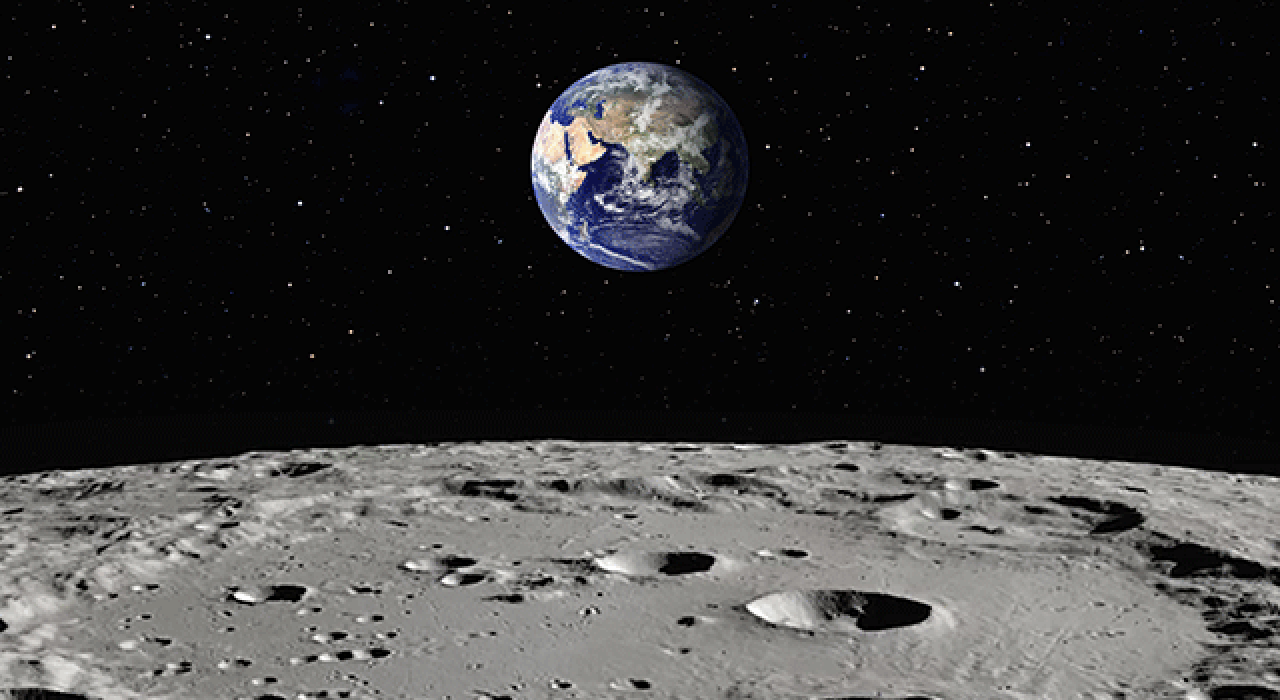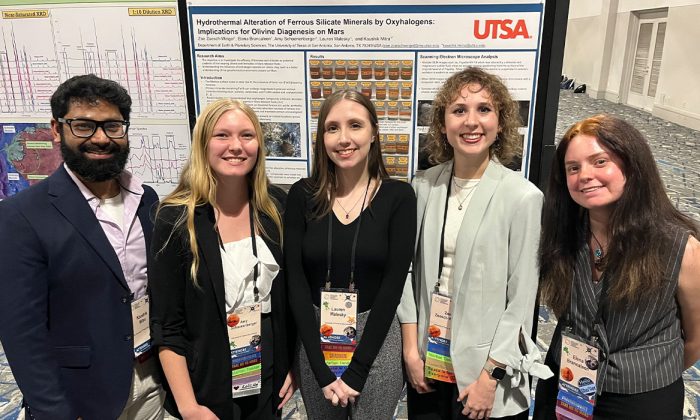As space missions beyond Earth become more ambitious, NASA needs to develop new ways to keep habitats operational when they are not occupied by astronauts.
UTSA Civil and Mechanical Engineering Professor Arturo Montoya and his students are laying the foundation for a future in space as part of a NASA-funded project that began in 2019. The Resilient Extraterrestrial Habitat Institute (RETHi) focuses on developing lunar habitats that can handle the harsh conditions of space while providing shelter for astronauts living and working on the moon.
“The simulations being conducted at UTSA are truly unique, representing a pioneering effort in this field. We are advancing both knowledge and science,” Montoya said.
“It has been a privilege to witness UTSA’s rise to an R1 research institution and to contribute to groundbreaking events that will shape the future.” — Arturo Montoya
Dylan Bohanan, a mechanical engineering graduate student, and Ali Al-Zoubi, a civil engineering graduate student, are part of the UTSA research team aiming to create adaptable habitats that can endure expected and unexpected space disruptions. Using computer simulations, they test how these habitats will survive meteorite impacts, low gravity, moonquakes and extreme temperatures.
“It’s a very big opportunity, at least from when I was little, I always wanted to do NASA stuff, you know, you see all that, all those things, especially coming from Texas and San Antonio especially, and it’s just a great opportunity to have those experiences and actually work on something that, like I could only dream of when I was younger,” Bohanan said.
Montoya and his students are playing a key role in the state’s efforts to propel space exploration. Last year, Texas Governor Greg Abbott launched the Texas Space Commission, which aims to boost innovation in space, aeronautics and aviation within the state.
“It has been a privilege to witness UTSA’s rise to an R1 research institution and to contribute to groundbreaking events that will shape the future,” Montoya said.
The UTSA researchers are collaborating with experts from Purdue, the University of Connecticut, Harvard and Mississippi State.

UTSA researchers from the Resilient Extraterrestrial Habitat Institute are working to develop lunar habitats that can handle the harsh conditions of space.
Last month, UTSA announced the launch of the Center for Space Technology and Operations Research (CSTOR), a new research center dedicated to advancing engineering, technology and operations that will support space missions between the Earth and the Moon, an area referred to as cislunar space, as well as the lunar surface. The center will address the growing demand for research and workforce development by civil, commercial and national security space agencies and companies.
CSTOR includes more than 35 UTSA researchers advancing work in areas such as uncrewed spacecraft, lunar habitation, hypersonics and propulsion. Additionally, over 200 undergraduate and graduate students at the university are preparing for careers in these areas.



